Basic Genetics
Our bodies are made up of billions of cells that serve as the living building blocks of our bodies. Cells are found throughout our body including muscle, brain, skin, blood, bones, and organs. Cells can be thought of as tiny factories, containing many elements that help our body to grow and function properly. One very important area of a cell is known as the nucleus. Within the nucleus, we find the chromosomes and genes of our body:
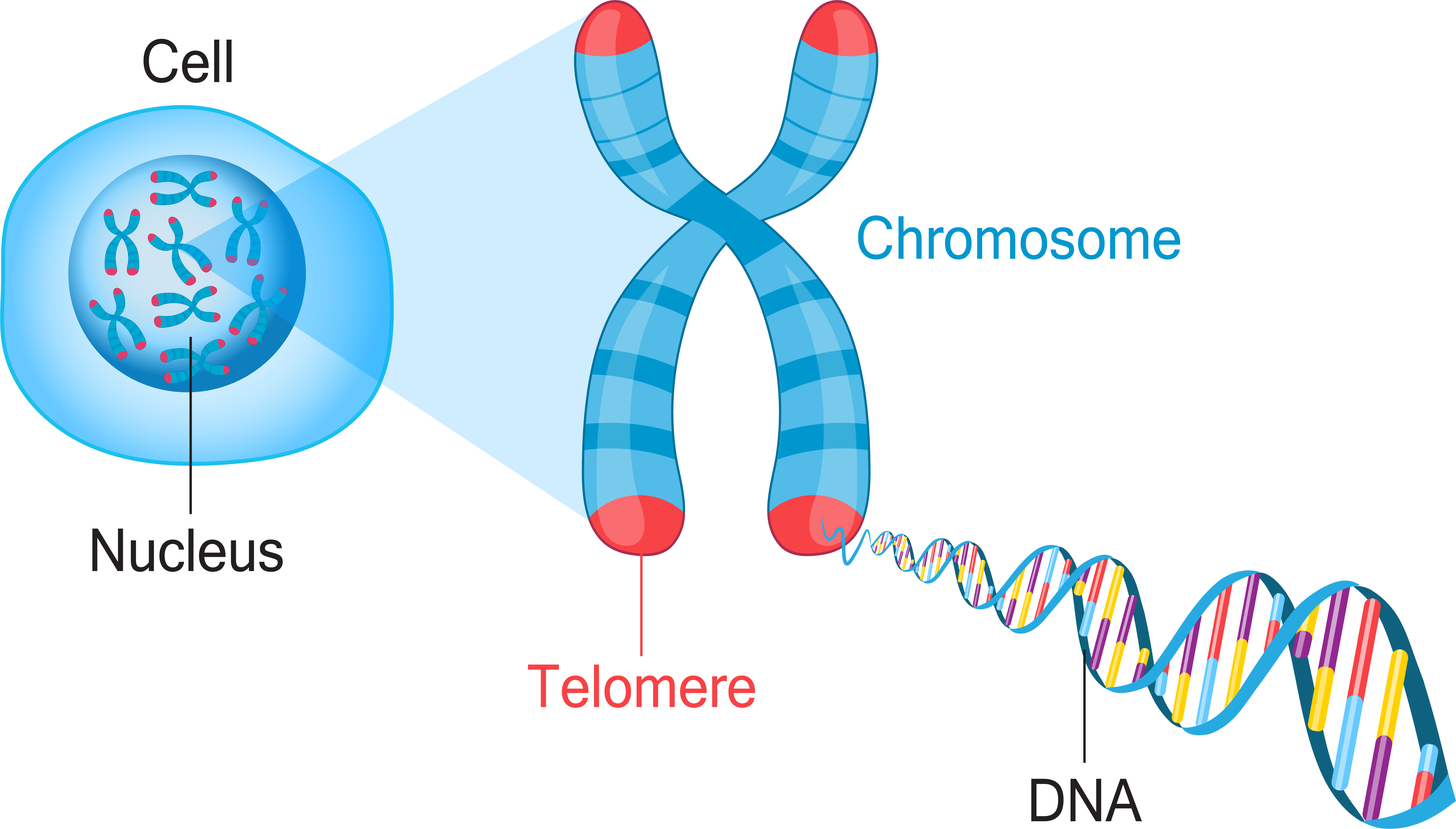
Chromosomes are the packages that contain the individual genes involved in human growth and development. Genes are instructions of our bodies, shaping how we look and how our body functions. Humans typically have 46 chromosomes in each cell, which can be arranged into 23 pairs. The first 22 pairs of chromosomes are given numbers to identify them and referred to as “autosomes”. The last pair of chromosomes are referred to as the "sex chromosomes". These chromosomes determine our biological sex. There are two types of sex chromosomes referred to as "X" or "Y". Biological females typically have two X chromosomes (XX) and biological males have an X and a Y (XY) chromosome.
The majority of human cells contain 46 chromosomes, except for “gametes” (also known as egg and sperm) which will contain one chromosome from each pair or half of the total genetic information.
When gametes (egg or sperm) are made, each typically receives one copy of the sex chromosomes. A female can only give one of her two X chromosomes whereas a male can give either an X chromosome or a Y chromosome. If an egg containing an X chromosome is fertilized by a sperm containing an X chromosome, the baby will be biologically female. If an egg containing an X chromosome is fertilized by a sperm containing a Y chromosome, the baby will be biologically male.
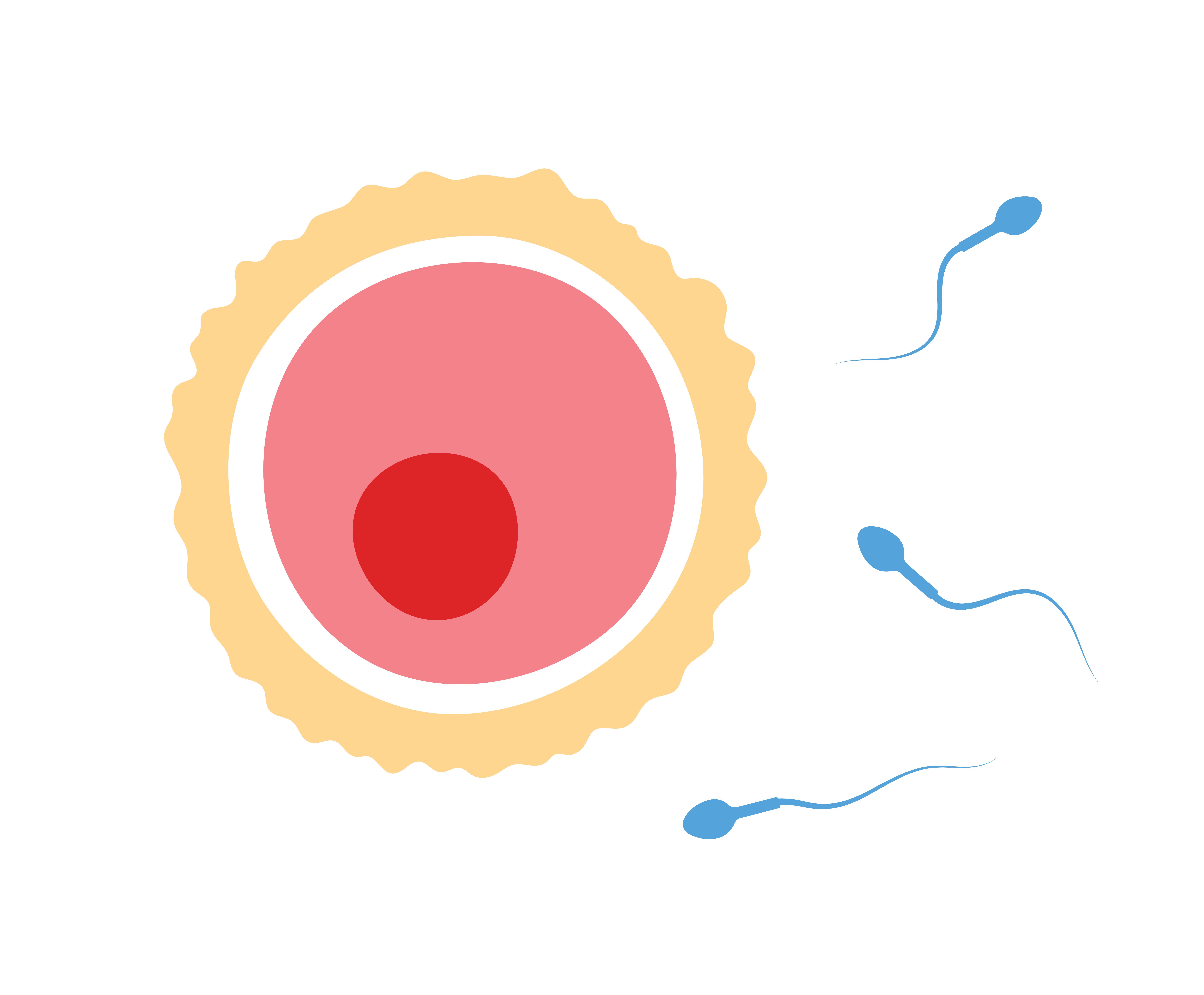
Genes are the instructions of our bodies. Genes are composed of DNA and instruct how our bodies will look and/or how they will function. We typically have two copies of each gene, except for those that are found on the sex chromosomes (“X” and “Y”). Changes in the coding of a gene or how it may be “written” may impact how that gene functions and may affect growth and development. In the past, we referred to these changes as “mutations”.
Over the years, our understanding of genetics has given us a better understanding of how differences in the coding of a gene(s) may or may not impact our growth and development. First, the use of “mutation” is no longer considered an acceptable term to use. Mutation has been replaced with the word “variant”. In 2015, the American College of Medical Genetics and Genomics developed a classification system to define what these changes meant.
- Pathogenic Variant: This means that the change within the gene is likely to be the cause of the condition in the patient.
- Likely Pathogenic Variant: This means that the change within the gene is suggested to be disorder-causing but because there is not enough published information about the variant, it is not certain.
- Variant of Unknown Significance (VUS): This means there is little to no information available to say that this variant is disorder-causing or completely benign (harmless).
- Likely Benign Variant: This means there is more information to suggest that the variant in this gene is probably benign (harmless) but not enough information to be confident in it.
- Benign Variant: This means that the change within the gene is not disorder-causing and is not considered to be the cause of the condition in the individual.
NOTE: Inherited bleeding disorders like Hemophilia, von Willebrand disease, and certain Platelet disorders are present at birth, determined by the genes that are contained on chromosomes and passed down in the gametes from our mother’s egg and our father’s sperm. We typically have 46 chromosomes that can be arranged into 23 pairs. The first 22 pairs are known as autosomes and the final pair determines our biological sex and is known as the sex chromosomes.
Chromosomes contain genes, which are the blueprint or instruction of our bodies. Changes within the coding of genes are no longer called mutations and, instead, referred to as “variants” which are further defined by how we believe the variant will impact the function of a given gene.
Modes of Inheritance refer to how genes are passed, and they can contribute to inherited conditions, such as Inherited Bleeding Conditions. As stated above, we typically have two copies for each of our genes. It is very important to remember that we cannot control the genes we give or receive.
Typically, there are four modes of inheritance: Autosomal Dominant, Autosomal Recessive, X-linked, and Mitochondrial, and are described below:
- Autosomal dominant conditions: A genetic condition that results when a single copy of the pathogenic variant is inherited from a mother or a father. Having a single copy of this variant is enough to result in a congenital disorder. A child of a person affected by an autosomal dominant condition has a 50% chance of being affected by that condition. An example of an autosomal dominant condition is Type 1 von Willebrand disease.
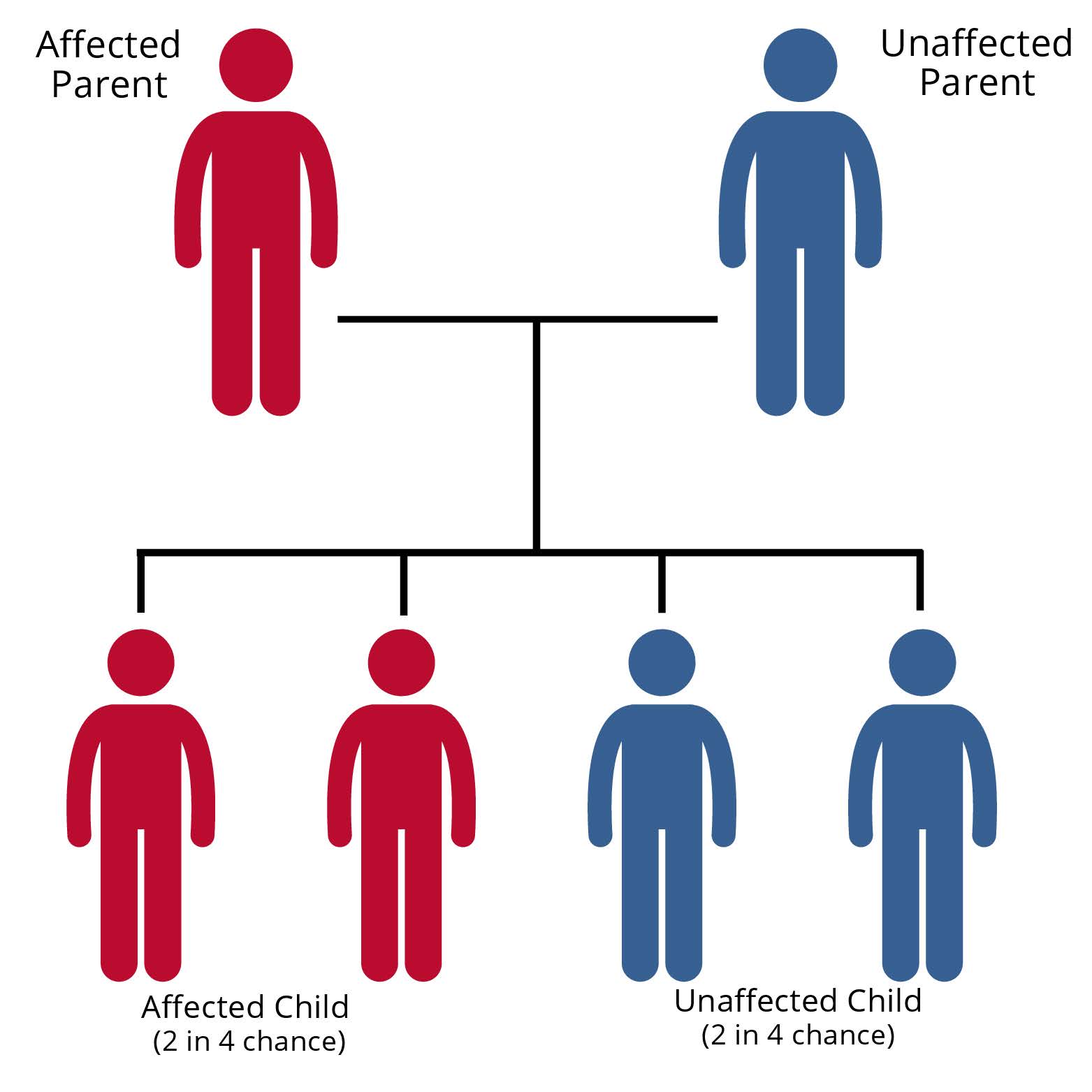
- Autosomal recessive conditions: A genetic condition that results when two copies of a pathogenic variant are inherited from both the mother and the father at the time of fertilization. Both genes inherited must have a pathogenic variant, which impacts the function significantly enough to result in the condition. When this occurs, the mother and the father are typically unaffected carriers for the condition or may be affected themselves. An example of an autosomal recessive condition is Cystic Fibrosis or Sickle Cell.
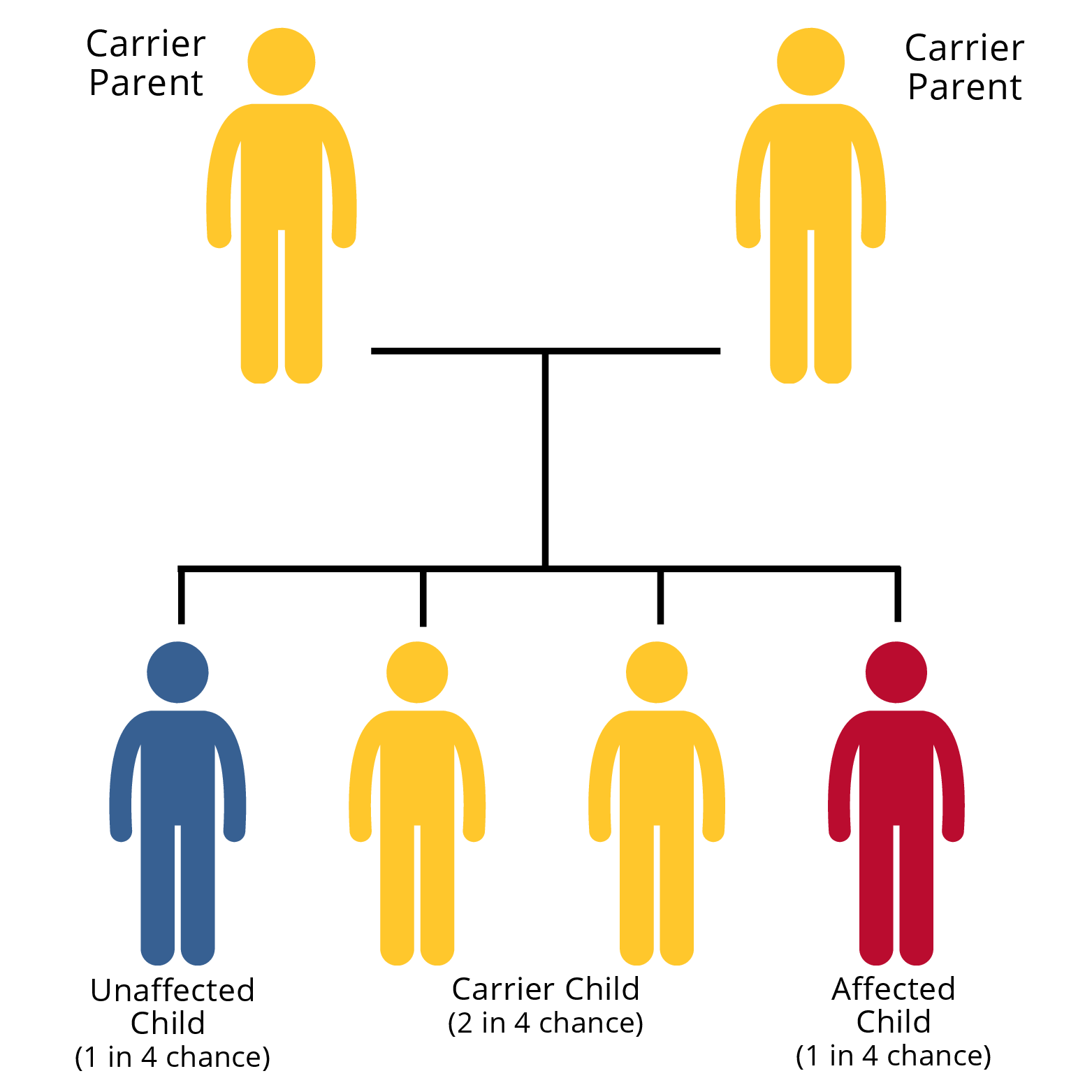
- Sex-linked conditions: Mostly impact genes carried on the X chromosome. These conditions typically impact only biological males as they have a single X chromosome and a single Y chromosome whereas biological females have two “X” chromosomes. Biological females who are carriers for a sex-linked condition may be symptomatic themselves, through a process called skewed lyonization.
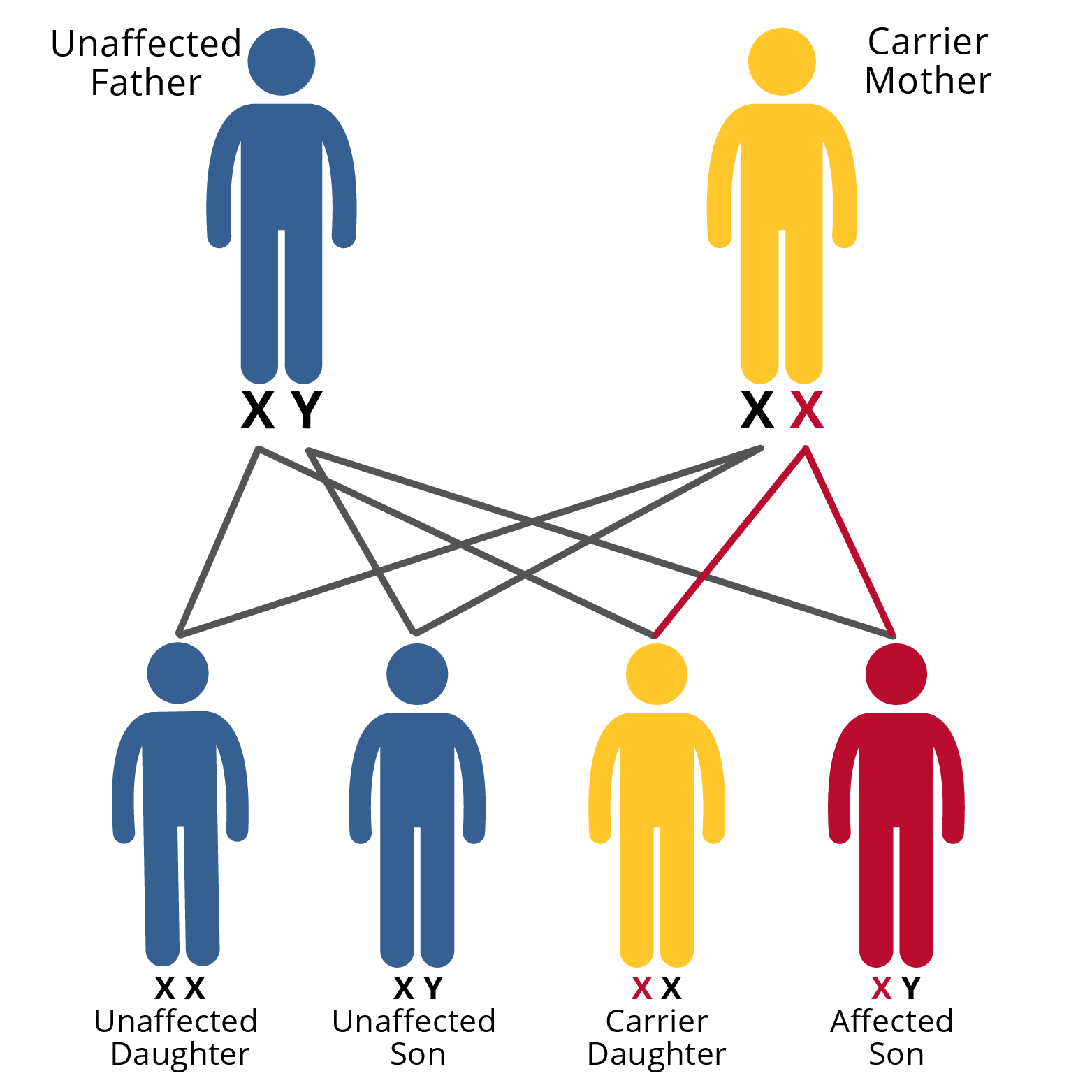
- Mitochondrial: Less familiar but should be mentioned, this mode of inheritance results from pathogenic variants that are passed on in the genes of the mitochondria. The mitochondria are the energy producers of the cells and are also maternally inherited in the egg.
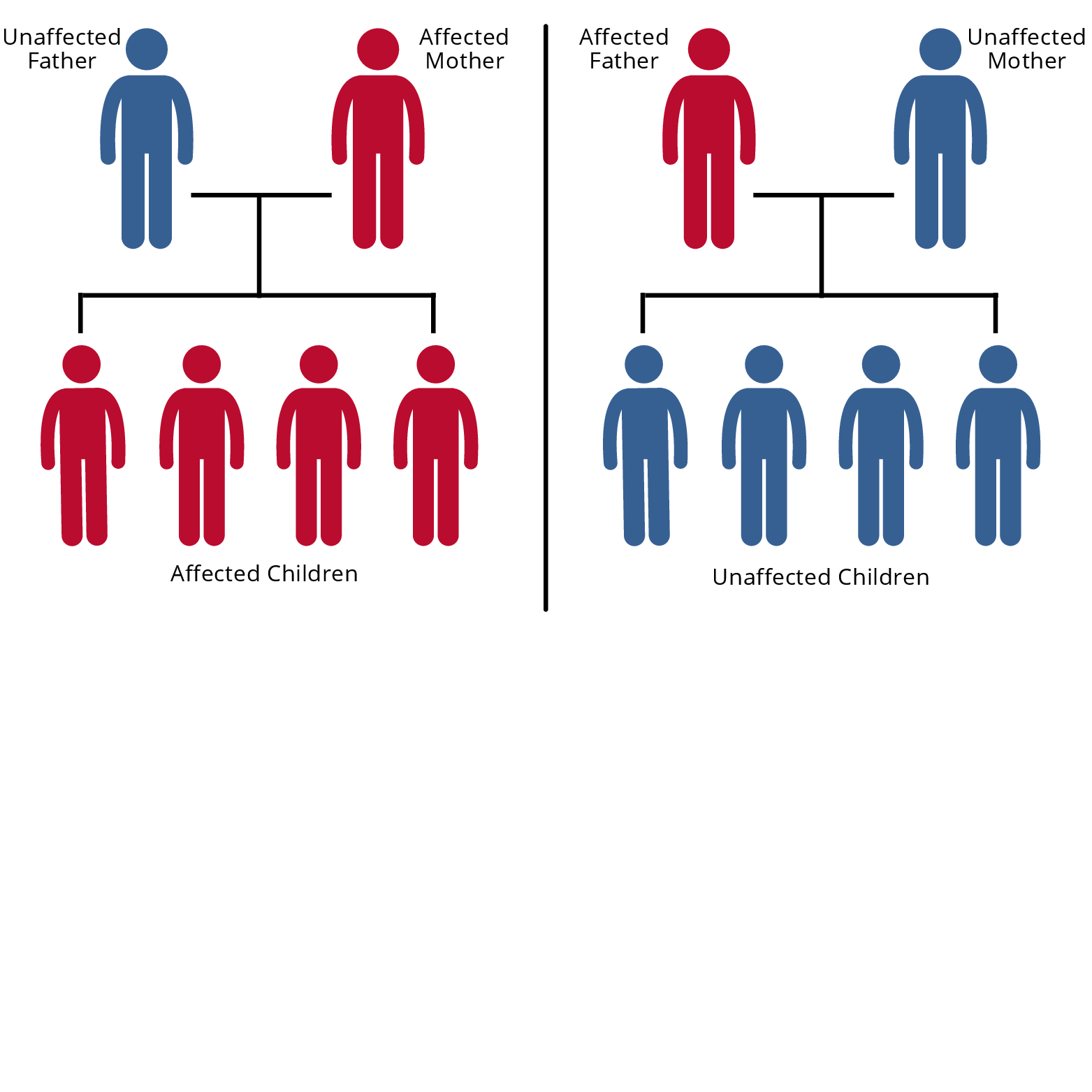
NOTE: In general, there are four ways in which genetic conditions are inherited and refer to these mechanisms as modes of inheritance. They include autosomal dominant, autosomal recessive, sex-linked conditions, and mitochondrial inheritance. In some sex-linked conditions, biological males may not be the only individuals affected with the condition. Biological carrier females may be mildly symptomatic or impacted differently as compared to biological males. Rarely, females can be moderately or severely affected. Our understanding of genes, inheritance patterns, and modifying genes can impact what we know about how severely an individual can be affected and our knowledge is evolving. The genes people transmit or receive in egg or sperm are random and we do not have control over what is given or what is received.
